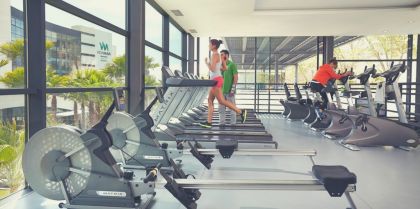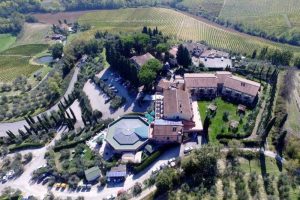I first went on a ski holiday to Austria when I was 17 and, while I was reasonably fit having played football all my life, I still found that by the time we finished our first day skiing the whole lower half of my body was weak! I’m not trying to put you off your next ski break though, but instead I’d recommend doing some exercise before going to help better prepare your body for the physical effort it’s going to put in on your ski holiday. If you’re going for a short break, then you’ll be making the most of your time on the slopes each day. With restaurants at the top of slopes, you don’t even have to take much of a break during the day to eat lunch! So what exactly would we recommend doing to get some pre-ski holiday fitness?
Cardio
As I mentioned above, you’re likely to be putting in some serious hours on the ski slopes during your next ski holiday, especially since you’re likely to only get away on one ski break a year! With this in mind, you’ll need to build up your endurance and cardiovascular fitness. If you don’t have time during a normal working week to get in huge amounts of walking or workouts, then it might come as a bit of a shock to your system to go from zero to 3 days on the slopes. As well as this, it’s important to take into account the higher altitude your body will be dealing with at the peak.
Few people are fans of pure cardio workouts so the modern outlook on this is often to fit in some HIIT (high intensity interval training) into the rest of your workout. Rather than going for a jog at 40% of your maximum speed and effort for an hour, the workout would be condensed into shorter bursts where you use 60-100% of your output. One of the most popular trends sweeping the fitness market is Tabata where you go all out at 100% for 20seconds, take a 10second break and then go right back to it for a number of repetitions. You could do this for a variety of different cardio exercises from sprints to stationary bike – or if you want to help with skiing as much as possible then perhaps try the rowing machine or cross trainer as these will more closely mimic the muscle activation and movements during skiing. If you’re already reasonably fit and looking for an extra challenge, try the assault bike – not for the faint-hearted though!
Balance/Core
I’m sure you’re pretty much an expert at the whole walking on two feet thing, right? However, it becomes a bit trickier when your boots are attached to long skis to glide down a snowy mountain. Whether you’re a beginner or pro skier, you’ll want to have good core strength to help you stay upright, especially during the turns. A hidden benefit to adding core strength is also that during these movements you’ll rely less on the muscles in your back – meaning that you’re less likely to pick up an injury.
A great core exercise that absolutely nobody is a fan of, is the plank. Proper technique is key here, and rather than trying to explain it, it’s probably easier to check it out in videos such as this one. The plank is great because it’s easily measurable too in that you can test how long you can hold it for. Once you’ve progressed beyond around 45second holds, you can also add some variations, e.g. plank reach, or lateral high plank crawls (not quite as fast as this video though!).
Legs
Like many of our exercises already mentioned, leg exercises can be done simply using your own bodyweight. Lunges are a good start and can be done without any additional weight until your legs become strong enough to cope with the added weight of dumbbells or kettlebells. For proper technique, ensure that your back stays straight and that your back leg only goes to a 90° angle so that it is parallel to the floor. Once you’re able to do this comfortably for 10 reps each leg, you can start adding small weights to increase the strength. Your legs will of course be your main source of power on the slopes, so this is probably the area you want to focus on most. As well as this, of course you don’t want to look like Johnny Bravo with a built upper body and chicken legs!
A personal favourite is the single leg dead lift – which sounds a lot more intense than it is! This works on your strength through single leg training. Single leg training might sound more difficult but it also has a huge amount of benefits in comparison to training both legs at the same time. These benefits include increasing strength to both legs rather than relying on your stronger leg (there will be one!), improving balance, and helping improve your other workouts by allowing you to really hone in on the technique for these movements.
Ready?
If you think you’ve always wanted to ski but have always been put off by the fitness aspect of it, then why not set yourself a goal? Book that ski holiday and alleviate your worries! With something to focus on (getting fit before you travel!) then you’ll be more motivated to stick to any new workout routine and make your goals a reality. If you’re there, then why not take a look at our ski breaks in Italy with some great resort options for beginners!





